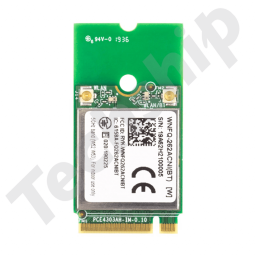

- #Broadcom 802.11ac driver with 5 ghz preferenece 64 Bit
- #Broadcom 802.11ac driver with 5 ghz preferenece drivers
- #Broadcom 802.11ac driver with 5 ghz preferenece update
- #Broadcom 802.11ac driver with 5 ghz preferenece full
#Broadcom 802.11ac driver with 5 ghz preferenece drivers
Drivers & Software How Tos End of Service Information Warranty Lookup.
#Broadcom 802.11ac driver with 5 ghz preferenece full
#Broadcom 802.11ac driver with 5 ghz preferenece update
Broadcom 802.11ac Wireless PCIE can't be started after Fall Creators Update I have Xiaomi Mi Pad 2 and I haven't got any issue so far with Anniversary and Creators Update so far. Finally, restart network-manager to apply the changes: sudo systemctl restart network-manager. When you are done editing, press CTRL + o and then press ENTER to save the file and then press CTRL + x to exit nano. If you want to use 2.4 GHz, use bandbg instead. I've read every guide I could find and have tried uninstalling and reinstalling sooo many Broadcom drivers to no avail (though this DID cause the name of the device in device manager to change to ".Full Dongle Adapter #8" at one point though now it's "#3"? might need some help with cleaning up the registry as reinstalling does not fix this naming convention). Single-chip baseband/MAC/radio all-in-one die with integrated dual-band power amplifiers for 2x2 2.4 GHz and 5 GHz 802.11n applications. This will set the network to use 5 GHz only. Please can somebody point me to the correct driver so I can enjoy the speeds I've paid for. When connecting over WiFi, my other mobile devices easily reach speeds of just over 300 mb/s whereas my Macbook does not even reach 100 mb/s in the same locations.

I have a fibre optics plan and have been extremely frustrated by this driver induced bottleneck. The 2.4Ghz connection is consistent and quite stable except for certain areas of the house where a 5Ghz signal would be optimal. Because a monitoring device is passive, the WLAN being monitored. Such networks create a very complex, adaptive signal intensity map with dips and bumps, some as small as a few centimeters in volume. I can see and select the AC network as an option to connect but it will not connect. The use of the MIMO and Transmit Beamforming technology in 802.11n, 802.11ac, and 802.11ax networks is a serious challenge for wireless analyzers.
#Broadcom 802.11ac driver with 5 ghz preferenece 64 Bit
However, all models performed similarly, with subtle variances in design, features and pricing left to differentiate them from one another.I am running Windows 7 64 bit on my Macbook Pro 13'' 2015 and have experimented with numerous drivers but am unable to find one that enables me to connect to the 5Ghz band on my router. Does the Dell 1560 802.11ac/Broadcom 802.11ac card work with the 80Mhz bandwidth I have tried uninstalling drivers to the basic Broadcom driver but I still cannot get my XPS13 to connect to my Wireless AC network. Broadcom Wireless Lan Driver v.6.34.223.5 (32 / 64 bit) (. Netgear's Nighthawk X6 tends to offer the best balance of performance in various use cases. All are AC3200 routers that use the new Broadcom XStream 5G platform. HotHardware's AC Router round-up takes a look at four flagship AC routers from ASUS, TRENDnet, D-Link and Netgear. Also, while 802.11n supports only four streams of data, 802.11ac supports up to eight streams on channels that are twice as wide. However, 802.11ac makes up for it with a technology named Beamforming, which allows it to figure out where devices are located and amplify the signal in their direction instead of just broadcasting in all directions like 802.11n. The trade-off is that 5GHz signals typically don't travel as far as those on the 2.4GHz channel.

AC capability is only available on the 5GHz channel, which has fewer devices on it than a typical 2.4GHz channel. AC is backward compatible with all previous standards, and whereas 802.11n was only able to pump out 450Mb/s of total bandwidth, 802.11ac is capable of transmitting at up to 1,300Mbps on a 5GHz channel. MojoKid writes: Wireless routers are going through somewhat of a renaissance right now, thanks to the arrival of the 802.11ac standard that is "three times as fast as wireless-N" and the proliferation of Internet-connected devices in our homes and pockets.


 0 kommentar(er)
0 kommentar(er)
